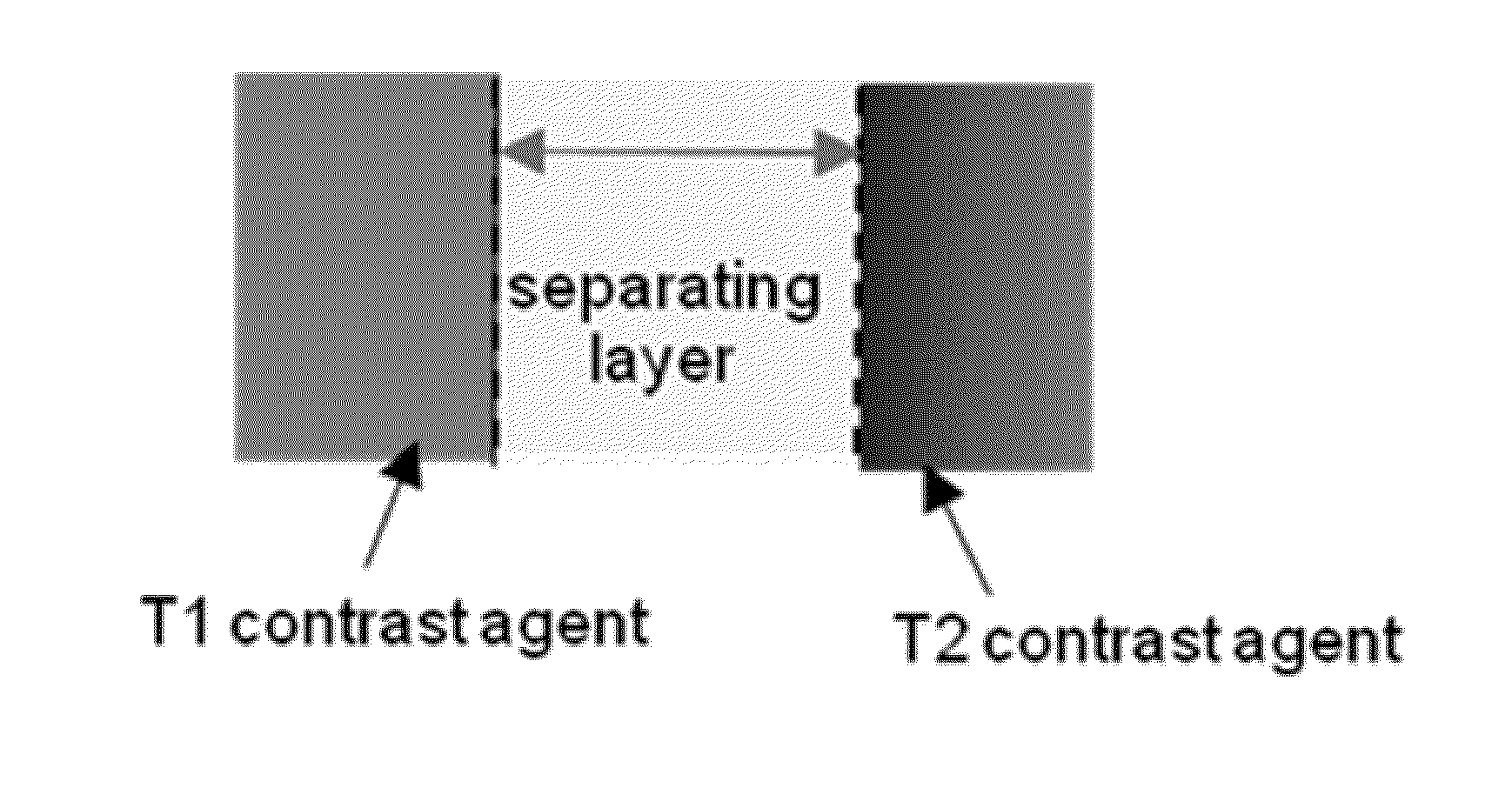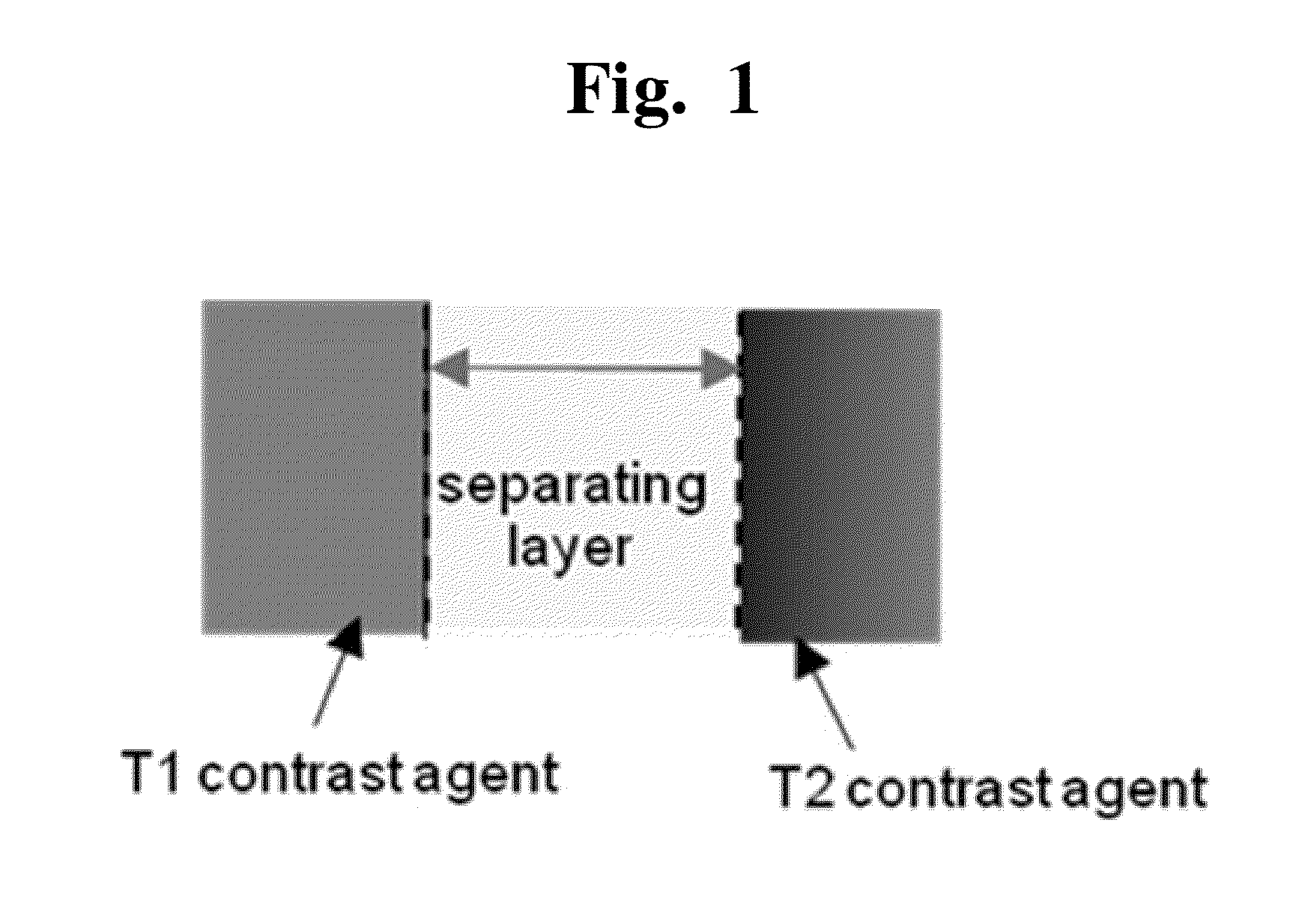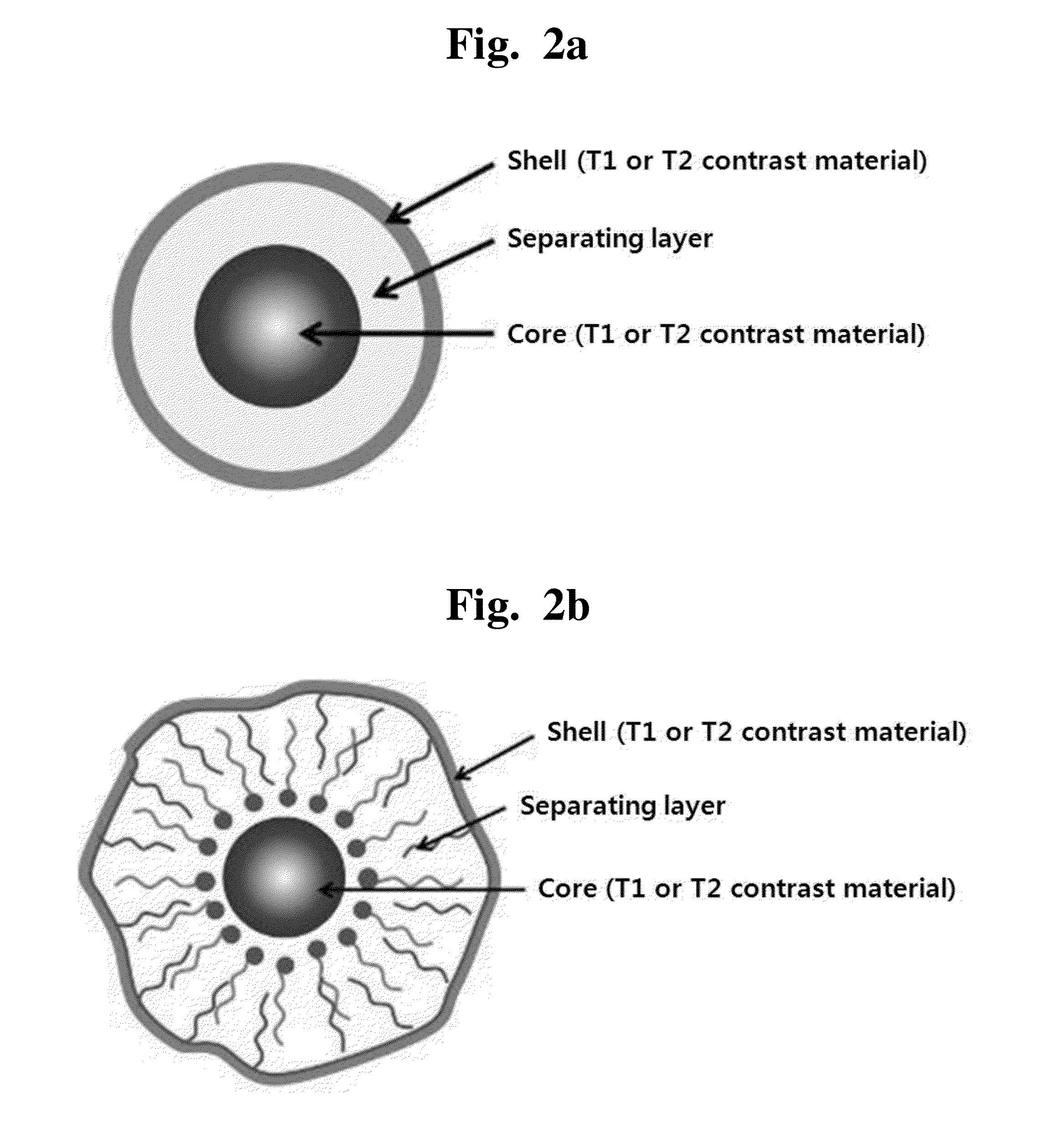T1-t2 dual modal MRI contrast agents
a dual-modal, contrast agent technology, applied in the direction of biocide, diagnostic recording/measuring, genetic material ingredients, etc., can solve the problems of not having successfully established a dual-modal mri contrast agent, unable to obtain the corresponding information simultaneously using such diagnostic methods, and not being able to develop a t1-t2 dual-modal contrast agent up to da
- Summary
- Abstract
- Description
- Claims
- Application Information
AI Technical Summary
Benefits of technology
Problems solved by technology
Method used
Image
Examples
example 1
Synthesis of Metal Oxide Nanoparticles (MFe2O4 (M=Mn, Fe, Co, Ni), ZnxM1-xFe2O (M=Mn, Fe; x=0.2, 0.3, 0.4, 0.8)) Used as T2 Contrast Material
[0156]Metal oxide nanoparticles (MFe2O4 (M=Mn, Fe, Co, Ni), ZnxMx-1Fe2O4 (M=Mn, Fe; x=0.2, 0.3, 0.4, 0.8) used as T2 contrast materials were produced according to the method described in Korean Pat. No. 0604975 filed by the present inventors. To prepare 15 nm-sized nanoparticles, Fe(acac)3 (Aldrich, USA) and MCl2 (M=Mn, Fe, Co, Ni, Zn; Aldrich, USA) as precursors of nanoparticles were mixed at an equivalence ratio of 2:1 and then added to 20 mL octylether solvent (Aldrich, USA) containing 0.1 M oleic acid (Aldrich, USA) and 0.1 M oleylamine (Aldrich, USA) as capping molecules. The mixture was incubated for 2 hrs at 290° C. under argon gas atmosphere. For preparation of Zn-containing metal oxides (ZnxM1-xFe2O4), Fe(acac)3 (Aldrich, USA) and ZnCl2MCl2 (M=Mn, Fe; Aldrich, USA) as precursors were mixed at an equivalence ratio of 2:1 whereas a ratio...
example 2
Synthesis of Metal Alloy Nanoparticles (FePt) Used as T2 Contrast Material
[0157]Metal alloy FePt nanoparticles used as T2 contrast materials were produced according to the method known to those skilled in the art (S. Sun et al. Journal of the American Chemical Society 2004, 126, 8394). As precursors of nanoparticles, 1 mmol of Fe(CO)5 (Aldrich, USA) and 0.5 mmol of Pt(acac)2 (Aldrich, USA) were added to dioctylether solvent (Aldrich, USA) containing 2 mmol oleic acid (Aldrich, USA) and 2 mmol oleylamine (Aldrich, USA) as capping molecules. The mixture was incubated for 1 hr at 200° C. under argon gas and further reacted for 2 hrs at 300° C. The nanoparticles synthesized were precipitated by excess ethanol and then isolated. The isolated nanoparticles were again dispersed in toluene, generating a colloid solution. All synthetic nanoparticles had a particle size of 6 nm with a sphere shape (FIG. 3m).
example 3
Synthesis of Metal Oxide Nanoparticles (M2O3 (M=Gd, Ho, Dy)) Used as T1 Contrast Material
[0158]Metal oxide nanoparticles (M2O3 (M=Gd, Ho, Dy)) used as T1 contrast materials were produced according to the method described in Korean Pat. No. 0604975 filed by the present inventors. To prepare metal oxide nanoparticles with a sheet shape, MCl2 (M=Gd, Ho, Dy; Aldrich, USA) as precursors of nanoparticles were added to octylether solvent (Aldrich, USA) containing 0.6 mmol oleic acid (Aldrich, USA) and 0.12 mmol oleylamine (Aldrich, USA) as capping molecules. The mixture was incubated for 2 hrs at 290° C. under argon gas atmosphere. By TEM (Transmission Electron Microscopy) analysis, it was demonstrated that all nanoparticles synthesized have a sheet shape with a size of about 1 nm and each Gd2O3, Dy2O3 and Ho2O3 has a diameter of 15, 25 and 20 nm (FIGS. 3n-3p). The practical shape of metal oxide nanoparticles synthesized is a sheet shape, but may be shown as a sphere or rod shape depending...
PUM
| Property | Measurement | Unit |
|---|---|---|
| thickness | aaaaa | aaaaa |
| thickness | aaaaa | aaaaa |
| thickness | aaaaa | aaaaa |
Abstract
Description
Claims
Application Information
 Login to View More
Login to View More - R&D
- Intellectual Property
- Life Sciences
- Materials
- Tech Scout
- Unparalleled Data Quality
- Higher Quality Content
- 60% Fewer Hallucinations
Browse by: Latest US Patents, China's latest patents, Technical Efficacy Thesaurus, Application Domain, Technology Topic, Popular Technical Reports.
© 2025 PatSnap. All rights reserved.Legal|Privacy policy|Modern Slavery Act Transparency Statement|Sitemap|About US| Contact US: help@patsnap.com



